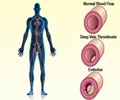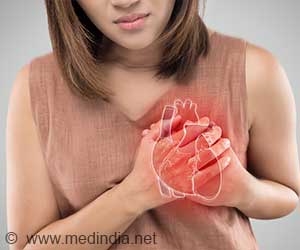Weight-based dosing of enoxaparin to prevent VTE is significantly more effective than BMI-stratified dosing in achieving sufficient anti-Xa concentrations.

As many as 42 of these morbidly obese women were assigned to weight-based enoxaparin, and a total number of 43 women received BMI-stratified dosing.
In the weight-based dosing regimen, the women received 0.5 mg/kg of enoxaparin every 12 hours. As per the BMI-based regimen, participants with BMIs of 40 – 59.9 were administered 40 mg enoxaparin every 12 hours and participants with BMIs of 60 or greater received 60 mg enoxaparin every 12 hours.
Results show that the weight-based group received significantly higher concentrations of anti-Xa compared with the BMI-stratified group (0.29 international units per mL vs. 0.17 international units per mL).
As per the results, while about 36 participants (86%) of the weight-based dosing group received anti-Xa concentrations within the prophylactic range or preventive range for VTE, only 11 participants (26%) of the BMI-stratified dosing group reached the specified range.
However, no participants met the threshold for venous thromboembolism prophylaxis or anti-Xa concentration of 0.6 IU/mL or greater.
The researchers acknowledge that this study was limited by a relatively small sample size, lack of long-term clinical outcome data, and the use of only a single anti-Xa level. However, they were able to predict the peak anti-Xa levels fairly well. They attempted to quantify anti-Xa levels after both the first and second dose, due to an average length of stay of only three days, but that was often not possible. This study concentrated mainly on a weight-based dosing algorithm leading to predictable peak anti-Xa levels in obese patients and not on clinical outcomes. Although this study gives a better idea on how to optimally prescribe VTE prophylaxis in morbidly obese patients, further studies are necessary as an optimal approach still remains unproven.
Background and Importance of the Research
Venous thromboembolism (VTE) is the development of blood clots in the vein. When a clot forms in a deep vein, it is called a deep vein thrombosis or DVT. If the clot breaks loose and travels to the lungs, it could lead to a condition known as pulmonary embolism or PE, which could be a life-threatening event. Together, DVT and PE are known as VTE, – a dangerous medical condition.Obesity is a significant risk factor for the formation of VTE. Morbidly obese women or women who are 100 pounds over their ideal body weight have a four-fold greater rate of VTE postpartum than normal women. Also, studies have shown that obese women are more likely to deliver by cesarean method and suffer postpartum complications than non-obese women.
Existing current guidelines advise that obese women get at a minimum pneumatic compression devices for VTE prevention after cesarean delivery. The devices consist of an inflatable garment for the arm, leg, trunk, or chest and an electrical pneumatic pump.
However, researchers from the University state that there is no consensus with respect to the use, dosage, timing, or duration of anticoagulation medication in this high-risk population.
Enoxaparin is the recommended anticoagulant for VTE prevention in pregnancy, and the recommended thromboprophylactic dose of enoxaparin is 40 mg daily. The anti-Xa test is an assay method that estimates the direct inhibition of factor Xa by enoxaparin. For prophylactic anticoagulation, anti-Xa concentrations between 0.2 and 0.6 international units per milliliter (IU/mL) are considered enough.
Obesity or morbid obesity changes the bioavailability and distribution of enoxaparin. There are limited researches conducted so far on the correct dosing for enoxaparin in obese women after cesarean delivery. The current study gives a correct enoxaparin dosing strategy to treat VTE in morbidly obese women after cesarean delivery.
References:
1. Obstetrics & Gynecology: June 2015 - Volume 125 - Issue 6 - p 1371–1376 doi: 10.1097/AOG.0000000000000873
2. http://www.ncbi.nlm.nih.gov/pmc/articles/PMC3245965/
3. https://en.wikipedia.org/wiki/Venous_thrombosis
Source-Medindia
 MEDINDIA
MEDINDIA




 Email
Email





